Christine Valters Paintner's Blog, page 80
May 19, 2019
Sacred Rhythms of Sky, Sun, Sea and Stone: Participant Poems ~ Cathy Roby
In April, 18 creative souls gathered with us for our retreat on Inismor – Sacred Rhythms of Sky, Sun, Sea and Stone. We had a wonderful group with participants from all over the U.S., Canada, U.K., and Australia. I am delighted to share some of their poems. Pour a cup of tea, imagine yourself on a windswept limestone island in the Atlantic, and savor for a while.
From Cathy Roby
Benedictions…
Blessed be the birds that sing God’s glory
Blessed be the flowers waking up to Spring
Blessed be the land that grounds my spirit
Blessed be the stones that hold the stories
Blessed be the wind blowing in new life
Blessed be the sea refreshing my soul
Blessed be the Spirit, gracing my day.
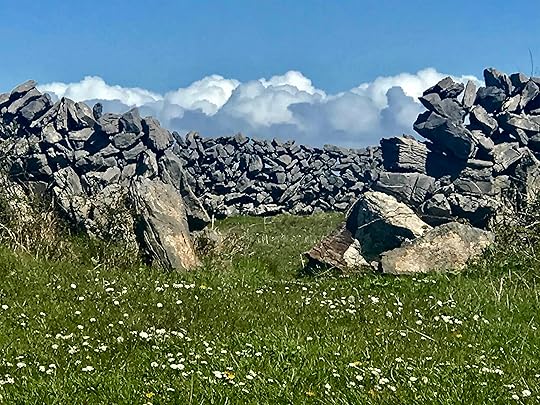
Sufficient
Praise you for the times when the holy wells seem to run dry
Praise you for the clouds in life, when sunny days would be easier
Praise you for times of confusion, when you ask me to be patient with the process and trust
Praise you for the mystery around trials that come my way
Praise you for gently reminding me I am not in charge, you are
Praise you for your grace, sufficient for each day on this journey…
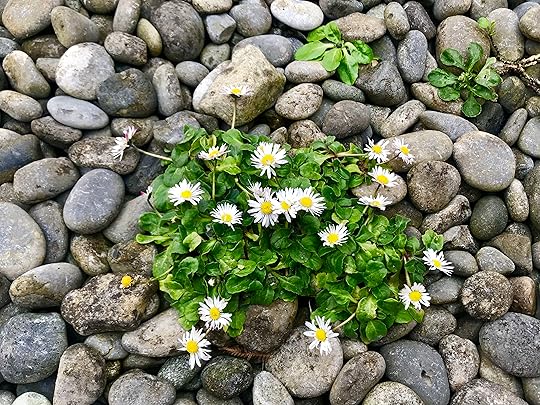
Invitation
You invite me Lord into the Holy Well of your heart, my heart
It looks dark and uncertain at times but you say “cup your hands and drink in my grace, refresh yourself and be patient, the beauty will happen.”

Cathy has been in the ministry of teaching, leading retreats and contemplative days of prayer for the past 30 years. She is currently on the teaching team as well as an Interviewer for the Called & Gifted program through the Diocese of Orange and St. Catherine of Siena Institute and is certified Spiritual Director. One of her passions is leading others closer to the heart of God through transformational teaching and recognizing their individual call through their gifting.
Cathy has been married to her husband Jim for 40 years and they have three wonderful children. They reside in Laguna Niguel, CA.
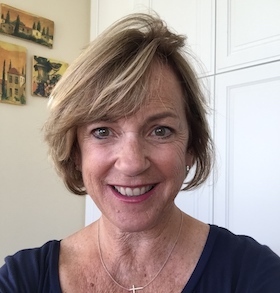
May 18, 2019
How to Be a Pilgrim (new poetry video) ~ A Love Note from Your Online Abbess
How to Be a Pilgrim
Air travel is like
ancient pilgrims walking on their
knees, flight delays and narrow seats
offer their own kind of penance.
You jettison excess baggage,
leaving behind the heavy makeup case,
knowing the rain will
wash you free of artifice.
Books you wanted to carry left too,
no more outside words needed,
then go old beliefs which keep
you taut and twisted inside.
Blistered feet stumble over rocky
fields covered with wildflowers and you
realize this is your life,
full of sharp stones and color.
Red-breasted robins call forth
the song already inside,
a hundred griefs break open under
dark clouds and downpour.
Rise and fall of elation and exhaustion,
the tides a calendar of unfolding,
a bright star rises and you remember
a loved one waiting miles away.
A new hunger is kindled by the sight of
cows nursing calves in a field,
spying a spotted pony, you forget
the weight and seriousness of things.
Salmon swim across the Atlantic,
up the River Corrib’s rapids to the
wide lake, and you wonder if you have
also been called here for death and birth.
This is why we journey:
to retrieve our lost intimacy with the world,
every creature a herald of poems
that sleep in streams and stones.
‘Missing you’ scrawled on a postcard sent home,
but you don't follow with
‘wish you were here.’
This is a voyage best made alone.
—Christine Valters Paintner
Dearest monks, artists, and pilgrims,
I wrote this poem several years ago soon after arriving to Ireland and spending time wandering the landscape. It appears in the opening of my book The Soul of a Pilgrim, a book close to my heart because it explores what pilgrimage meant in my life after having embarked on a grand adventure, to see where the Spirit had led us and the challenges along the way.
Now, after having guided pilgrimage groups for the last six years, this all feels all the more true, an invitation to continue to deepen my intimacy with the world around me, to see how the stones and salmon, the birds and the tides, call me to new awareness of what it means to live a meaningful life.
This will be the final poem video for now in the series we have been creating for Dreaming of Stones. There will likely be more in the future as time and resources allow, as it has been an exhilarating project to collaborate with other artists and see how the poem’s layers are revealed in new ways. I deeply appreciate Luke Morgan’s work as a filmmaker on these, and his brother Jake who composed most of the music. I love how each video had its own atmosphere and emotional quality and took me on a journey through the imagery in new ways.
I invite you to read the poem once through slowly and see if there is an image that shimmers for you or sense of invitation that arises from it. Then watch the video and see if there are any other layers that are revealed.
You can order your copy of Dreaming of Stones. I’d be so grateful if you’d consider posting a review to Amazon.com and Goodreads! It helps authors so much in getting their book seen by a wider audience.
Want to dive into sacred poetry with me in Chartres, France? Join me June 10-14, 2019 for a transformative week of reading and writing poetry together (no experience necessary) and the chance to walk an ancient labyrinth. Step onto the threshold where new possibilities beckon. Register here>>
With great and growing love,
Christine
Christine Valters Paintner, PhD, REACE
Video © Christine Valters Paintner
May 17, 2019
Call for Submissions: Monk in the World Guest Posts
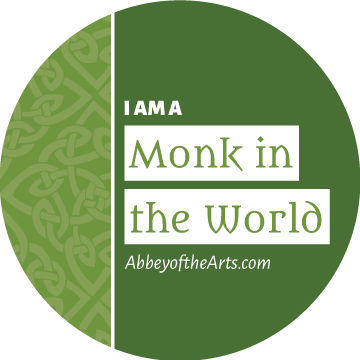 We welcome you to submit your reflection for possible publication in our Monk in the World guest post series. It is a gift to read how ordinary people are living lives of depth and meaning in the midst of the challenges of real life.
We welcome you to submit your reflection for possible publication in our Monk in the World guest post series. It is a gift to read how ordinary people are living lives of depth and meaning in the midst of the challenges of real life.
There are so many talented writers and artists in this Abbey community, so this is a chance to share your perspective. The link to the reflection will be included in our weekly newsletter which goes out to thousands of subscribers.
Please follow these instructions carefully:
Please click this link to read a selection of the posts and get a feel for the tone and quality.
Submit your own post of 700-900 words on the general theme of "How do I live as a monk in the world? How do I bring contemplative presence to my work and/or family?" It works best if you focus your reflection on one aspect of your life or a practice you have, or you might reflect on how someone from the monastic tradition has inspired you. We invite reflections on the practice of living contemplatively.
Please include a head shot and brief bio written in the third person (50 words max). You are welcome to include 1-2 additional images if they help to illustrate your reflection in meaningful ways. All images should be your own. Please make sure the file size of each the images is smaller than 1MB. You can resize your image for free here.
We will be accepting submissions between now and June 20th for publication sometime in the fall of 2019 and beyond (depending on the number of submissions). We reserve the right to make edits to the content as needed (or to request you to make edits) and submitting your reflection does not guarantee publication on the Abbey blog, but we will do our best to include as many of you as possible.
Email your submission to Melinda by June 20th and include the reflection pasted into the body of your email and attach your photo(s).
We will be back in touch with you at the latest by early August to let you know if your post is accepted, if edits are needed, and/or when we have scheduled your post to appear.
May 14, 2019
Featured Poet Series: Barbara Crooker
We are launching a new series this spring with poets whose work we love and want to feature!
Our next poet is Barbara Crooker, whose work is deeply inspired by paying attention to how God whispers in the world. You can hear Barbara reading her poem "Sanctus" below and read more about the connections she makes between poetry and the sacred.
https://abbeyofthearts.com/blog/wp-content/uploads/2019/05/Sanctus.m4a
Peeps
In those last few months my mother didn’t want to eat, this woman
who made everything from scratch, and who said of her appetite,
I eat like a bricklayer. Now she listlessly stirred the food
around her plate, sometimes picking up a piece of chicken,
then looking at it as if to say, What is this? Wouldn’t put
it in her mouth. But Peeps! Marshmallow Peeps! Spun sugar
and air, molded in clever forms: a row of ghosts, a line
of pumpkins, a bevy of bunnies, a flock of tiny chicks,
sometimes in improbable colors like purple and blue. . . .
One day, she turned over her tray, closed her mouth, looked up
at me like a defiant child, and said, I’m not eating this stuff.
Where’s my Peeps?
When it was over, the hospice chaplain said some words
in my back yard, under the wisteria arch. The air was full
of twinkling white butterflies, in love with the wild oregano.
Blue-green fronds of Russian sage waved in front of the Star
Gazer lilies, and a single finch lit on a pink coneflower, and stayed.
When there were no more words or tears, I ripped open
the last packet of Peeps, tore their little marshmallow bodies,
their sugary blood on my hands, and gave a piece to each
of us. It melted, grainy fluff on our tongues, and it was good.
from Gold
Themes of Her Work
In my new book, Some Glad Morning, coming out in the fall 2019, from the University of Pittsburgh Poetry Press in the Pitt Poetry Series, I find I’m exploring transience. Here, in the final decade (s) of my life (I may be past my sell-by date already, according to some acutuarial charts), the hardest part is loss, losing friends, losing the body’s capabilities, etc. I worried that the manuscript had too many elegies, but as I read it over, I realized it also had a fair amount of joy (hence the title). I live by this quote from Wendell Berry, “Be joyful though you have considered all of the facts.”
The Books of Kells: Chi/Rho
The Book of Kells is an illuminated manuscript
of the four Gospels, created in around 800 AD.
The Chi/Rho page consists of the Greek letters
chi and rho that were used in medieval times
to abbreviate the word "Christ."
With quills and ink of iron gall on folded vellum,
monks in their cells labored in hives of stone,
producing pages that glistened like honey,
sweetening the word of God. On this page, the chi
commands the eye, its arm swooping to the left
in an elegant scrawl, the smaller rho and iota
nestled to the right. Knotwork fills each letter
to the brim. Three angels fly from the crossed
arms, heaven and earth intertwined, coiled spirals
connected by curves. Despite the gleam, no gold
is used, just layers of color built up like enamel.
In the interstices, creatures of air: birds and moths;
creatures of sea: fish and otters; creatures of land:
cats and mice. For the whole world was holy,
not just parts of it. The world was the Book of God.
The alphabet shimmered and buzzed with beauty.
from The Book of Kells
Poetry and the Sacred
It is my ardent belief that most of us are sleepwalking through our “one wild and precious life” (Mary Oliver), looking down at our phones, spending hours on social media (photos of the moon instead of going outside and looking at the moon), etc. Reading and writing poetry is the opposite of this; it’s paying attention. And attention is, I think, a form of prayer. Frank Lloyd Wright said, “I believe in God, only I spell it ‘Nature’," and, for me, that’s where I feel God the most, outside in the woods, fields, gardens, rather than in a church (although I’m a regular church-goer). I try to write outside whenever I can, especially when I’m in residence at a colony, which has been part of my practice. I’ve tried to have two weeks or so every couple of years, and during that time, all I do is read, write, and take walks. And pay attention to everything that shows up (I believe in serendipity), whether it’s an inchworm, a conversation at dinner, a painting (artists usually have open studios), or a piece of music (there are often concerts or musicians performing after dinner). I try to be open to everything, as that’s how, I think, God whispers.
Ireland
A brown hare washes her face
in the lane while the hare in the moon
looks on. The hare in the moon
carries an egg, new cycle of life
that comes in the spring. But now,
it’s autumn, the sky closing in,
fir trees inking footprints
on the gray silk sky. A luminous sky,
tattered with crows. Two swans,
ruffled lilies, float in the lake’s bright bowl.
Some fairy’s touched all the trees overnight,
turned them orange, yellow, and red. All of
the green fields are clotted with sheep. What
is the world, but the body of God?
from The Book of Kells

About Barbara Crooker
Barbara Crooker's work has appeared in many journals, including The Christian Century, America, Sojourners, Saint Katherine Review, Perspectives, Literature and Belief, The Cresset, Tiferet, Spiritus, Assisi, Dappled Things, Ruminate, Rock & Sling, Relief, Seminary Ridge Review, The Anglican Theological Review,and anthologies such as The Bedford Introduction to Literature and Imago Dei: Poems from Christianity and Literature. She is a recipient of the Thomas Merton Poetry of the Sacred Award, and the author of twelve chapbooks and nine full-length books of poetry; The Book of Kells is the most recent, with Some Glad Morning coming out in the Pitt Poetry Series (University of Pittsburgh Press) in the fall, 2019. She is a poetry editor for Italian American and lives and works in rural northeastern Pennyslvania.

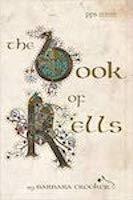


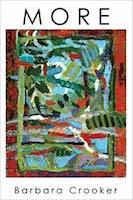
Order Barbara Crooker's Books
(using the Amazon links above help to support the Abbey scholarship fund at no additional cost to you)

Dreaming of Stones
Christine Valters Paintner's new collection of poems Dreaming of Stones has just been published by Paraclete Press.
The poems in Dreaming of Stones are about what endures: hope and desire, changing seasons, wild places, love, and the wisdom of mystics. Inspired by the poet’s time living in Ireland these readings invite you into deeper ways of seeing the world. They have an incantational quality. Drawing on her commitment as a Benedictine oblate, the poems arise out of a practice of sitting in silence and lectio divina, in which life becomes the holy text.
[image error]
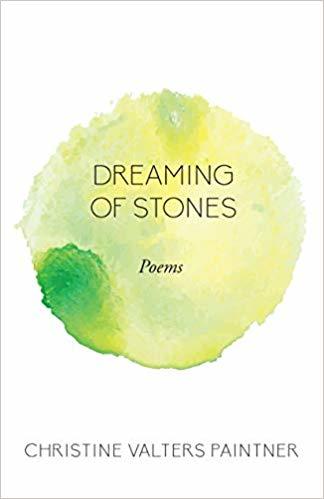
May 12, 2019
Writing on the Wild Edges Participant Poem: Patia Carque
At the end of April, 15 creative souls gathered with us for our retreat on Inismor – Writing on the Wild Edges of the World. We had a wonderful group with participants from all over the U.S., Canada, and South Africa. I am delighted to share some of their poems over these next few weeks. Pour a cup of tea, imagine yourself on a windswept limestone island in the Atlantic, and savor for a while.
From Patia Carque
Inismore
Embraced by waves, winds, anion
the Isle will do the work.
She’ll lift, kiss, nourish you
while cows graze her hilly breasts.
She’ll hear your pilgrim prayer
as you step upon her stones,
as your heart sings songs of presence,
as she gently heals your wounds.
You have been invited to explore
your place of resurrection in this world.
You will listen in her stillness.
You will see a world that shimmers.
You will name your beasts and passions
with a voice that is your own.
She will spin you dizzy till you grasp
your vulnerability.
She’ll receive the ribbons of your wishes
on her Hawthorne trees.
When you fall, her arms will catch you
with her thickets and her thorns
until you cease your struggle
reaching out to others’ hands.
Inverted cups of penitents
poured out upon the rocks
are lifted up, creation blessed
with echoes of the past.
Ascend the hills, release the bees.
There is a time to fight.
Dance round bright fires, spring is here
to celebrate new life.
Come to the door now with yourself
a spiral well descending.
With courage draw a clear, cool drink
as darkness brings a new beginning.
Hear the Island whisper to the wisdom of your soul.
You are loved and gifted. May creation make you whole.
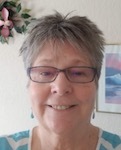 Patia Carque retired two years ago after thirty years of ministry within the United Church of Christ (UCC). She is currently living in St Petersburg, FL, where she seeks her “place of resurrection” as a poet, writer, and all she is being invited to be. She sends joy, love and creativity to you, with gratitude for her recent pilgrimage Writing on the Wild Edges in Inismore, and asks for your prayers on her journey.
Patia Carque retired two years ago after thirty years of ministry within the United Church of Christ (UCC). She is currently living in St Petersburg, FL, where she seeks her “place of resurrection” as a poet, writer, and all she is being invited to be. She sends joy, love and creativity to you, with gratitude for her recent pilgrimage Writing on the Wild Edges in Inismore, and asks for your prayers on her journey.
May 11, 2019
Please Help Support Our Jubilee Year ~ A Love Note from Your Online Abbess
 Dearest monks, artists, and pilgrims,
Dearest monks, artists, and pilgrims,
Contemplative rhythms are essential here at Abbey of the Arts, both in terms of what we teach as well as what we practice. Each week we try to take a Sabbath day as a time to celebrate the lavish gift of rest. Each summer we take a month of sabbatical time to refresh and renew our bodies and spirits.
We both long for a longer time of sabbatical. If we still worked in a university or church setting this might be built in to the financial support, but since we are entirely self-supporting taking this needed time to step back and listen for the deeper call demands more planning and outside financial support.
About a year ago we realized that since we were coming up on our 50thbirthdays in 2020 (Christine and John’s birthdays are a day apart – June 23 and June 24 – same year of birth) that we might take the opportunity to live into the biblical practice of Jubilee. Because the Jubilee is the 50thyear we realized that when we turn 49 is the start of our Jubilee year and this happens for us in June 2019 when we will begin a year of sabbatical.
Jubilee is a time of sabbatical but also a time to let the land lie fallow, for the forgiveness of debt, and for freedom for everyone in the land. It is a time for us to lie fallow for a while, and pay attention to the ways we have enslaved ourselves through busyness and productivity. It is an invitation into deeper listening and allowing new visions to emerge.
Mostly we want time to be at home in Galway and to rest and write. Writing is our first love for both of us and often gets squeezed between everything else we do. To have open and uninterrupted time to write will be a tremendous gift. We do have some travel planned, a retreat together to begin our experience, and some ancestral travel which has been so core to Christine’s spiritual practice for many years.
We have been saving money for this time. Taking a year off demands a lot of courage, to risk our financial well-being and trust that the Spirit and our community will help us to meet our needs. Because we would like to keep our website going and the daily and weekly email newsletters, as well as admin assistance for responding to email inquiries, there are a lot of administrative expenses we are seeking support from you for helping to cover.
With this in mind we have created a yearlong online program. The content from the program will come from the writing projects we are both working on, so won’t be added work during our sabbatical, but a chance for us to share with you what we are focusing our attention on.
For Christine, this means writing poetry and completing her book on Sacred Time. For John, he will be sharing some stories featuring Hildy, our mascot monk-ey, that illumine life here in Galway with some playfulness. We are also grateful to our wonderful Wisdom Council, as each member will be offering a mini-retreat to be featured each new moon (12 in all) to invite you into seasonal wisdom.
We hope you’ll consider supporting us in this way if you are able. There are different funding levels, as well as both monthly and one-time commitments.
If you’d like to see the content included for different levels of support please click here>>
If you aren’t able to offer support at this time, we ask for your prayers and blessings that this time be fruitful and offer the space needed for God’s new birthing in our lives to come through.
With great and growing love,
Christine
Christine Valters Paintner, PhD, REACE
Photo © Christine Valters Paintner
May 7, 2019
Monk in the World Guest Post: Adam Webber
I am delighted to share another beautiful submission to the Monk in the World Guest Post series from the community. Read on for Adam Webber's reflection, "The Lady Loves Me."
Tuesday morning, I wake up grumpy. I don’t want to go to work. Lying in bed, I recite the Breastplate of Saint Patrick to myself: “I arise today through a mighty faith….” I don’t know whether I have a mighty faith this morning or not, but I arise anyway.
In my church office I go over the lectionary readings for next Sunday. I am the pastor of this church, and it is our custom for the pastor to follow the lectionary—to find a theme for the sermon and the service in one or more of these lectionary readings every week. Alas, I’m not finding any inspiration in the lectionary today. I read it, prayerfully, again. Still nothing. I read some commentaries. Nope. I answer emails and phone calls, update the web site, clean up my desk, and fix the paper towel dispenser. I make a visit to a nursing home. Then I think about those readings again. Nada.
In the afternoon I escape for half an hour to the sauna at the municipal gym, and there it hits me, a flash of inspiration. It’s not the inspiration I was looking for, of course; it’s nothing to do with the lectionary readings and, in fact, it’s not a sermon idea at all.
It’s a song.
Actually, it’s just a line or two of a song, just a hook. “The Lady loves me, loves me, loves me day and night,” I sing to myself—and when I sing it, the Lady of whom I sing is God, and the love of which I sing is a joy and a delight. I realize, then, what I’m being called to do. There will be no sermon on Sunday. There will be a song, a new song, and I will write it and share it with the congregation.
From long experience I know that it would be a waste of time to complain to God about this stupid inspiration. I complain to God about this stupid inspiration.
Wednesday morning, I wrestle with doubt. I look back at my sermons from three years ago; isn’t there something there I could recycle? But after dithering for an hour, I take the plunge. I give my church secretary notes for Sunday’s bulletin. In place of the sermon there will be a song, and it will be called “The Lady Loves Me.” Now I just have to write it.
By Wednesday afternoon I have a draft of the lyric. But, musically, I still have only that one line. I take a long walk and sing to myself. The feeling I’m going for is a kind of innocent exuberance—a feeling of being swept away by love. I dance a little as I walk—nobody will see me, skipping along this back road in the wintertime. My song is starting to feel like a pop love song, a seventies love song, and it gravitates to a nice, familiar structure: verse, refrain, verse, refrain, bridge, verse, refrain, refrain. It seems to call for an exuberant seventies-style instrumentation, like a Partridge Family hit.
There are tons of other things to be done this week, of course. A member needs a meal brought, and I bring it. The choir needs to rehearse, and I rehearse with them. The Christmas decorations in the church need to come down, and I help take them down. My family needs dinner, and I cook it. But in between all these duties, I slip away to work on my song.
Thursday night, I’ve started scoring it: at first, it’s just vocals, steel drum, and bass. By Friday I’ve got a full score: rhythm guitar, trumpet, trombone, flute, backup vocals. With a computer sequencer, I lay out all the instrumentation I’ve written and add a drum line. By Saturday morning, it’s ready to go. I record the instrumental parts and practice singing along with them.
At the last minute, I rewrite the ending of the song several times. A true Partridge Family ending would use a repeated refrain that fades out as the applause comes up. But there will probably only be thirty people in church on Sunday. God willing, they'll be enthusiastic, but I’d better not count on a thunderous wave of applause.
Sunday morning, I wake up happy. When I was a kid, I used to lie in bed on Sunday mornings, hoping that my father would forget to get me up for church. (I can’t remember that he ever did, though.) But these days, I’m usually excited about Sundays. It’s like I’ve been cooking up a meal all week, and now I finally get to put it on the table. I pray as I arise:
Christ in the heart of everyone who thinks of me.
Christ in the mouth of everyone who speaks of me.
Christ in every eye that sees me,
Christ in every ear that hears me.
I arise today through a mighty faith ….
Thank you, Lady. I love you, too. I’ll do my best.
You can hear “The Lady Loves Me” at here >>
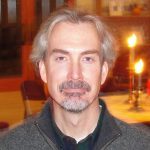 Adam Brooks Webber is a husband, father, writer, teacher, computer scientist, singer-songwriter, and student of the martial arts. When he was a boy, he couldn’t wait to grow up so that he could A) move away from small-town Illinois, and B) stop going to church. Consequently, he is now a pastor in a small town in Illinois.
Adam Brooks Webber is a husband, father, writer, teacher, computer scientist, singer-songwriter, and student of the martial arts. When he was a boy, he couldn’t wait to grow up so that he could A) move away from small-town Illinois, and B) stop going to church. Consequently, he is now a pastor in a small town in Illinois.
May 5, 2019
Sacred Rhythms of Sky, Sun, Sea and Stone: Participant Poems
In April, 18 creative souls gathered with us for our retreat on Inismor – Sacred Rhythms of Sky, Sun, Sea and Stone. We had a wonderful group with participants from all over the U.S., Canada, U.K., and Australia. I am delighted to share some of their poems. Pour a cup of tea, imagine yourself on a windswept limestone island in the Atlantic, and savor for a while.
From Katharine Kane:
Inishmore fairies
Passing the leaf bare brambles
Glimpse the fiery sun

Stone etching welcome
Misting from selkies haven
Ancient rebirthing

Waking Up in the City
In praise of the city noise that honks out its voice: first the owls sound, then the crows, then the buses and cars rev up to get started on their day. No alarm needed.
In praise of the guy in the next apartment who sings to the radio through his morning shower. I can hear you . . . .
In praise of the early worker who empties the recycle bin into a large container, the breaking glass bottles and the hollow aluminum cans crash together. They are music to my ears.
In praise of the morning rush to the metro as the human species speed-walks to what seems important, and to the occasional soul who raises their head to smile and say good morning. Sending my love.
In praise of the man who serves sweets and caffeine at the local cafe. He knows everyone on the line of the quietly hurried and knows how they like their coffee. I’m on my way.
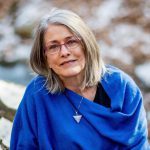 Katharine Donovan Kane is a personal life coach for the spiritual highly sensitive person. She’s passionate about writing, iPhone photography, and deep listening to the stories of others. You can reach Katharine at kdkane.com.
Katharine Donovan Kane is a personal life coach for the spiritual highly sensitive person. She’s passionate about writing, iPhone photography, and deep listening to the stories of others. You can reach Katharine at kdkane.com.
May 4, 2019
Requiem for Myself ~ Poem Video: A Love Note from Your Online Abbess
Requiem for Myself
When I die
plant a pinwheel
in an open field
where winter’s wind
and rain march forcefully
across in battalions,
and you can stumble
out there to meet me
one late afternoon
when you feel the world
must surely be ending.
You, soaked
from tears and storms,
kinship with dark sky.
Me, rainbow axis whirling,
an orbit of
joyful defiance.
You then, inspired,
tumble gleefully
across grass, pirouette,
forgetting for a moment
grief’s burden,
knowing the world
will be with you
for many years to come.
Never think
this brief sojourn wasted
as you head back
to the fire waiting at home,
laughing to yourself
the whole way.
—Christine Valters Paintner
Dearest monks, artists, and pilgrims,
This week’s poem was inspired when I was visiting the Central Cemetery in Vienna a couple of years ago. My father and grandparents are buried there and it is a place of quiet reflection. As I strolled down the aisles of graves, looking at the different headstones and sculptures that marked the place of loved ones, I came to a grave of a child that had several pinwheels sticking into the earth on top. There was a gentle breeze so their brightly colored faces were spinning around inviting a sense of joyfulness.
In the monastic tradition there is a practice called memento mori, which means to “remember daily that you will one day die” as St Benedict writes in his Rule. This is not meant to be a morbid exercise but an act of presence to the gift of life and an invitation to cultivate gratitude each day for what we are able to still do.
Musician Margo Hennebach came on one of our Ireland pilgrimages a couple of years ago with her husband Mark. Both are very gifted musicians and out of that experience she wrote a beautiful song called “Holy Well” which is on our Celtic album. I later sent her some of my poems to see if any inspired a song for her and she came back with one for this poem that really expressed the sense of joyfulness I was trying to convey. She does adapt some of the lyrics to enhance the musicality of the words.
So we have again a multi-layered collaboration with my poem, the song by Margo, and our wonderful local filmmaker Luke Morgan creating a video to express the poem.
I invite you to read the poem once through slowly and see if there is an image that shimmers for you or sense of invitation that arises from it. Then watch the video and see if there are any other layers that are revealed. When you remember your mortality, what rises up as essential in your life?
You can order your copy of Dreaming of Stones. I’d be so grateful if you’d consider posting a review to Amazon.com and Goodreads! It helps authors so much in getting their book seen by a wider audience.
Want to dive into sacred poetry with me in Chartres, France? Join me June 10-14, 2019 for a transformative week of reading and writing poetry together (no experience necessary) and the chance to walk an ancient labyrinth. Step onto the threshold where new possibilities beckon. Register here>>
With great and growing love,
Christine
Christine Valters Paintner, PhD, REACE
Video © Christine Valters Paintner
April 30, 2019
Featured Poet: Rabbi Rami Shapiro
We are launching a new series this spring with poets whose work we love and want to feature!
Our next poet is Rabbi Rami Shapiro, whose work is deeply inspired by the happening of God. You can hear Rabbi Rami reading his poem "The 23rd Psalm" below and read more about the connections he makes between poetry and the sacred.
https://abbeyofthearts.com/blog/wp-content/uploads/2019/04/New-Recording.m4a
After Psalm 93
The earth is secure;
it is I who imagine her frailty.
The earth stands firm;
it is I who plot her downfall.
She is greater than me,
and includes me in a larger scheme.
I am her child
though not her only child.
I am her hope
though not her only hope.
I am one she grew
to see her own face,
to know her own mind,
to foster surprise.
I am one who can know I am One.
Themes of His Work
All my work is rooted in the Yiddish realization: alles iz Gott, everything is God. I am a panentheist. I experience God is YHVH (from the Hebrew verb “to be”) the nondual Happening happening as all happening. If God is Happening happening as all happening, then everything that happens is God’s will, not in some egoic sense but in the sense that everything that happens happens because at the moment it happens nothing else could happen. This realization liberates me from the drama about why bad things happen to good people. They happen for the same reason good things happen to good (and bad) people—things happen. Free from the drama about suffering we are free to alleviate actual suffering.
Attending
Here I am— waiting.
Watching.
Listening.
Attending to what is within and without.
Your whispered breath fills me with wonder and wisdom,
and I bend embraced by You who are all.
For a moment I no longer breathe,
I am breathed.
For an instant I know the truth of who I am— Your breath,
a fleeting exhalation of
All into This.
How wondrous this moment
when breath breathes and knows itself Divine!

Poetry and the Sacred
I agree with St. Paul that God is that in which we live, and move, and have our being (Acts 17:28), therefore I don’t think in terms of coming into the presence of the sacred because there is nowhere where the sacred is not. I can awaken to what is, but not draw closer to what is. And one way I can awaken is through reading and writing poetry.
Reading poetry—and here I’m talking about spirituality-oriented poetry and liturgy—is a sacred practice when I yield to the words rather than try to understand them. This is when reading poetry is like listening to music: I am surrendered to the sound of music or words and allow them to take me where they will. Writing poetry is something altogether different.
I’ve published 36 books, all but three are prose. But whether prose or poetry I can’t claim to have written these books as a conscious act. I rewrite and hone each verse or sentence consciously, but the original writing is a gift of grace coming through me and not from me. This gift is what makes writing a spiritual practice for me.

Unending Love
I am loved by an unending love.
I am embraced by arms that find me
even when I am hidden from myself.
I am touched by fingers that soothe me
even when I am too proud for soothing.
I am counseled by voices that guide me
even when I am too embittered to hear.
I am loved by an unending love.
I am supported by hands that uplift me
even in the midst of a fall.
I am urged on by eyes that meet me
even when I am too weak for meeting.
I am loved by an unending love.
Embraced, touched, soothed, and counseled;
may mine too be the arms and the fingers,
the voice and the hands,
the eyes and the smile
that compels another to say:
“I am loved by an unending love.”
About Rabbi Rami Shapiro
Rabbi Rami Shapiro, PH.D is an award–winning author of over thirty-six books on religion and spirituality. Rabbi Rami directs the One River Foundation, writes the Roadside Assistance for the Spiritual Traveler column for Spirituality and Health magazine, and hosts the magazine’s weekly podcast, Essential Conversations with Rabbi Rami.
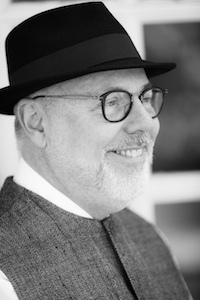
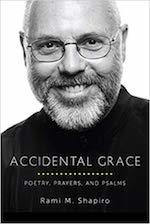
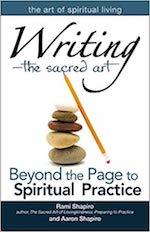

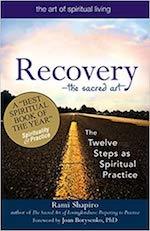
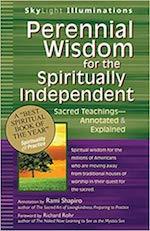
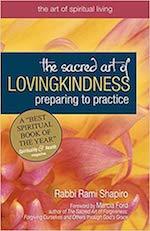
Order Rabbi Rami Shapiro,'s Books
Accidental Grace: Poetry, Prayers, and Psalms
Rabbi Rami has also written a number of nonfiction spirituality books including:
Writing―The Sacred Art: Beyond the Page to Spiritual Practice
The Divine Feminine in Biblical Wisdom Literature: Selections Annotated & Explained
Recovery―The Sacred Art: The Twelve Steps as Spiritual Practice
Perennial Wisdom for the Spiritually Independent: Sacred Teachings―Annotated & Explained
The Sacred Art of Lovingkindness: Preparing to Practice
(using the Amazon links above help to support the Abbey scholarship fund at no additional cost to you)

Dreaming of Stones
Christine Valters Paintner's new collection of poems Dreaming of Stones has just been published by Paraclete Press.
The poems in Dreaming of Stones are about what endures: hope and desire, changing seasons, wild places, love, and the wisdom of mystics. Inspired by the poet’s time living in Ireland these readings invite you into deeper ways of seeing the world. They have an incantational quality. Drawing on her commitment as a Benedictine oblate, the poems arise out of a practice of sitting in silence and lectio divina, in which life becomes the holy text.
[image error]




